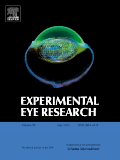
EXPERIMENTAL EYE RESEARCH
Scope & Guideline
Exploring the Frontiers of Visual Mechanisms
Introduction
Aims and Scopes
- Ocular Genetics and Molecular Biology:
Research on genetic factors influencing ocular diseases, exploring gene mutations, and their impacts on retinal and corneal health. - Retinal and Corneal Physiology:
Studies investigating the physiological mechanisms underlying retinal function, corneal integrity, and the effects of various treatments on these structures. - Therapeutic Interventions and Drug Delivery:
Focus on novel therapeutic approaches, including drug delivery systems, gene therapy, and the use of stem cells to treat ocular diseases. - Pathophysiology of Ocular Diseases:
Investigation of the underlying mechanisms of diseases such as glaucoma, diabetic retinopathy, and age-related macular degeneration. - Immunology and Inflammation:
Research into the role of immune responses and inflammation in ocular diseases, including the development of therapeutic strategies to mitigate these effects. - Innovative Imaging Techniques:
Development and application of advanced imaging modalities to study ocular structures and functions in health and disease.
Trending and Emerging
- Gene Therapy and Genetic Engineering:
An increasing number of studies focus on gene therapy as a novel approach for treating inherited retinal diseases, showcasing advances in CRISPR technology and viral vectors. - Regenerative Medicine and Stem Cell Therapy:
Research exploring the use of stem cells and regenerative techniques to repair ocular tissues and restore vision is gaining significant attention. - Ocular Microbiome and Its Role in Disease:
Emerging studies on the ocular microbiome and its implications for eye health, disease, and treatment strategies are becoming more prevalent. - Ocular Drug Delivery Systems:
There is a growing emphasis on innovative drug delivery systems, including nanoparticles and microneedles, to enhance the efficacy of ocular therapies. - Inflammation and Immunology in Ocular Diseases:
Increased focus on the role of inflammation and immune responses in ocular diseases, with research exploring novel anti-inflammatory therapies. - Artificial Intelligence and Imaging:
The integration of AI and advanced imaging techniques for diagnosis and monitoring of ocular diseases reflects a significant trend in enhancing clinical outcomes.
Declining or Waning
- Traditional Pharmacology Studies:
Research focused solely on classical pharmacological approaches without incorporating novel drug delivery systems or molecular biology insights seems to be less frequent. - Basic Histopathology of Ocular Tissues:
Studies concentrating solely on histopathological descriptions without integrating functional or molecular insights are appearing less, as the field shifts towards more comprehensive approaches. - Animal Models with Limited Relevance to Human Disease:
There is a declining trend in studies utilizing animal models that do not adequately mimic human ocular diseases, as researchers seek more relevant translational models. - Non-Experimental Reviews:
The journal has seen a decrease in the publication of purely review articles that do not present new experimental data or insights, reflecting a shift towards more data-driven research.
Similar Journals

KLINISCHE MONATSBLATTER FUR AUGENHEILKUNDE
Empowering Clinicians with Cutting-edge Knowledge.Klinische Monatshefte für Augenheilkunde is a distinguished peer-reviewed journal published by Georg Thieme Verlag KG, dedicated to advancing knowledge in the field of ophthalmology and general medicine. With an ISSN of 0023-2165 and an E-ISSN of 1439-3999, this journal has been a reputable platform for researchers and clinicians since its inception in 1963, continuing its impactful contributions through to 2024. Recognized in the Q3 quartile for both Medicine (miscellaneous) and Ophthalmology, this journal serves as a vital resource for those involved in ocular health, offering insights into clinical practices, recent advancements, and essential research findings. Despite its traditional publishing model, the journal retains a significant role in the academic community, as evidenced by its current Scopus ranking of #90/137 in the field of Ophthalmology. It is an essential read for professionals and students aiming to stay at the forefront of ophthalmic research and clinical innovations.
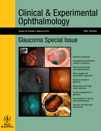
CLINICAL AND EXPERIMENTAL OPHTHALMOLOGY
Pioneering Discoveries for Visionary FuturesCLINICAL AND EXPERIMENTAL OPHTHALMOLOGY is a leading peer-reviewed journal published by Wiley, renowned for its commitment to advancing the field of ophthalmology. With an impressive impact factor reflecting its high-quality research contributions, this journal is ranked in the Q1 category both in Medicine (miscellaneous) and Ophthalmology, signifying its crucial role in shaping contemporary ophthalmic research. It boasts a remarkable position in the Scopus Ranks, standing at Rank #13 out of 137 in the field of Medicine and Ophthalmology, placing it within the 90th percentile among its peers. Having been in circulation since 1979, this journal encompasses a broad scope of topics that aim to disseminate groundbreaking findings and stimulate dialogue among researchers, clinicians, and students alike. It is easily accessible to a global audience, embodying the principles of open access, making valuable research available to all. For anyone seeking to stay at the forefront of ophthalmology, CLINICAL AND EXPERIMENTAL OPHTHALMOLOGY is an indispensable resource that fosters knowledge and innovation in the ever-evolving landscape of eye care.
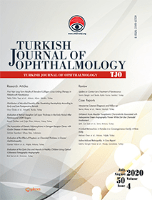
Turk Oftalmoloji Dergisi-Turkish Journal of Ophthalmology
Advancing Eye Health Through ResearchTurk Oftalmoloji Dergisi - Turkish Journal of Ophthalmology is a premier peer-reviewed publication dedicated to the field of ophthalmology, published by GALENOS PUBL HOUSE. Since its inception in 1997, this Open Access journal has championed the dissemination of high-quality research, fostering an inclusive environment for sharing knowledge and advancements in eye health. With an ISSN of 1300-0659 and an E-ISSN of 2147-2661, the journal serves as a vital resource for researchers, clinicians, and students interested in the latest findings and innovations in ophthalmic sciences. Although its coverage in Scopus has been discontinued since 2017, the journal has garnered a significant rank of 80 out of 114 in the field of Medicine – Ophthalmology, highlighting its relevance and impact within the discipline. Operating out of Istanbul, Turkey, the Turkish Journal of Ophthalmology continues to be a crucial platform for ophthalmologists and researchers to publish their work and advance the understanding of ocular health.
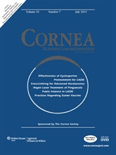
CORNEA
Fostering excellence in the field of cornea and beyond.CORNEA is a prestigious peer-reviewed journal published by Lippincott Williams & Wilkins, focusing on the rapidly advancing field of ophthalmology with a particular emphasis on corneal research and diseases. With an impact factor categorized in the prestigious Q1 quartile for its discipline, CORNEA has established itself as a leading platform for the dissemination of both fundamental and clinical studies since its inception in 1982. The journal is ranked 25th out of 137 in the Scopus Medicine-Ophthalmology category, placing it in the 82nd percentile among its peers, which underscores its vital role in influencing ocular research and clinical practices. While the journal is not currently open access, it provides valuable insights and updates for professionals, researchers, and students working to advance knowledge in corneal health, contributing significantly to the ongoing dialogue in the ophthalmological community. With a commitment to excellence, CORNEA continues to publish high-quality research and reviews in its pursuit to improve ocular outcomes and patient care.

CANADIAN JOURNAL OF OPHTHALMOLOGY-JOURNAL CANADIEN D OPHTALMOLOGIE
Illuminating the future of vision care.Canadian Journal of Ophthalmology - Journal Canadien d'Ophtalmologie, published by the prestigious Canadian Ophthalmological Society, serves as a leading platform for disseminating cutting-edge research in the field of ophthalmology. With an ISSN of 0008-4182 and E-ISSN 1715-3360, the journal boasts a commendable impact factor and maintains a strong presence within the medicine and ophthalmology categories, ranking in the Q2 quartile. This journal not only provides significant insights into clinical practices and advancements but also contributes to the understanding of ocular health issues facing contemporary society. Since its inception in 1966, it has published high-quality research, making substantial strides in both practical and theoretical aspects of ophthalmology until 2024. Although it is not an open-access journal, it establishes a vital resource for researchers, professionals, and students alike, fostering an informed community dedicated to improving vision care.

Journal of Ophthalmology
Fostering Collaboration for a Brighter VisionThe Journal of Ophthalmology, published by HINDAWI LTD, is an esteemed open-access journal that has been disseminating significant research in the field of ophthalmology since 2009. With an ISSN of 2090-004X and an E-ISSN of 2090-0058, this journal facilitates global access to cutting-edge studies, making it an essential resource for researchers, clinicians, and students alike. Ranked in the Q2 category of ophthalmology for 2023, the journal holds a commendable position with a Scopus rank of #37 out of 137 in its field, placing it in the 73rd percentile. The journal encompasses a variety of topics such as clinical advancements, surgical techniques, and innovative technologies in eye care, aiming to advance scientific knowledge and clinical practice in ophthalmology. By providing a platform for both novel research and comprehensive reviews, the Journal of Ophthalmology is instrumental in fostering collaboration and scholarly communication within the global eye health community, and its commitment to open access ensures that impactful research reaches a wide audience without barriers.

Asia-Pacific Journal of Ophthalmology
Elevating ophthalmic knowledge across the Asia-Pacific region.Asia-Pacific Journal of Ophthalmology is a distinguished open access journal published by the Asia-Pacific Academy of Ophthalmology (APAO), specializing in the latest advancements and research in ophthalmology. Since its inception in 2013, this journal has established itself as a vital platform for disseminating innovative findings and clinical practices across the Asia-Pacific region and beyond. With an impressive Scopus ranking of #10 out of 137 in the field of Medicine (Ophthalmology), placing it in the 93rd percentile, it garners significant attention and respect within the academic community. Currently holding a Q1 categorization in both Medicine (miscellaneous) and Ophthalmology, the journal embraces a broad scope that encompasses clinical studies, experimental research, and reviews aimed at enhancing the understanding and management of eye health. Its open access model since 2019 ensures that all published works are freely accessible, promoting greater collaboration and knowledge sharing among researchers, clinicians, and students. Situated in the Netherlands with a prominent address in Hong Kong, the journal serves as an essential resource for anyone dedicated to the field of ophthalmology.
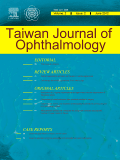
Taiwan Journal of Ophthalmology
Fostering global collaboration for better vision outcomes.Taiwan Journal of Ophthalmology is a premier open-access publication dedicated to advancing the field of ophthalmology. Published by Wolters Kluwer Medknow Publications, this journal has been a vital resource for researchers, practitioners, and students since its inception in 2012. With an ISSN of 2211-5056 and an E-ISSN of 2211-5072, it provides a platform for sharing innovative research, clinical findings, and reviews pertinent to eye health and vision science. The journal is indexed in Scopus and currently holds a Q3 quartile ranking within the ophthalmology category, reflecting its commitment to quality and relevance in the medical community. Located in Mumbai, India, Taiwans Journal of Ophthalmology aims to foster discussions and disseminate knowledge that promotes better understanding and treatment of ocular diseases, ensuring that the latest advancements reach a global audience. By embracing open-access policies, the journal underscores its dedication to making valuable insights readily available to all interested parties, thus contributing significantly to the discourse in ophthalmic research.
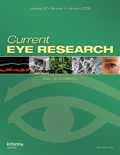
CURRENT EYE RESEARCH
Illuminating Innovations in Eye HealthCURRENT EYE RESEARCH is a prestigious academic journal published by Taylor & Francis Inc, focusing on advancing the field of ophthalmology and its intersection with cellular and molecular neuroscience. Since its inception in 1981, this journal has provided a vital platform for original research, reviews, and technical notes, presenting a wealth of knowledge to practitioners and researchers alike. With an impressive 2023 impact factor reflected in its ranking of Q2 in Ophthalmology and Q2 in Sensory Systems, and a Q3 ranking in Cellular and Molecular Neuroscience, CURRENT EYE RESEARCH plays a crucial role in fostering interdisciplinary collaboration and innovation. The journal is indexed in Scopus, where it holds strong positions in both the Medicine and Neuroscience categories, enhancing its visibility and reach. Researchers and professionals in these fields can access cutting-edge findings and contribute to the ongoing discourse surrounding eye health, making it an essential resource for anyone invested in advancing knowledge and treatment in ophthalmic science.

International Journal of Ophthalmology
Transforming Eye Health Through Open Access InsightsThe International Journal of Ophthalmology, with ISSN 2222-3959 and E-ISSN 2227-4898, is a premier open-access publication dedicated to advancing the field of ophthalmology. Published by IJO PRESS in China, this journal has been a valuable resource since its inception in 2005, providing a platform for groundbreaking research and clinical studies in ophthalmic science. With an impressive Q2 ranking in the 2023 Ophthalmology category and a Scopus rank of #65 out of 137, the journal consistently showcases high-quality articles that contribute significantly to the understanding and treatment of eye diseases. Since adopting an open-access model in 2010, it has expanded its reach, allowing researchers, professionals, and students worldwide to access vital knowledge in the field. The journal aims to bridge the gap between laboratory research and clinical practice, making it an essential resource for those committed to improving visual health and advancing ophthalmologic education and innovation.